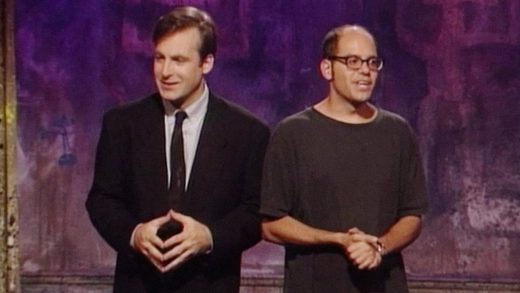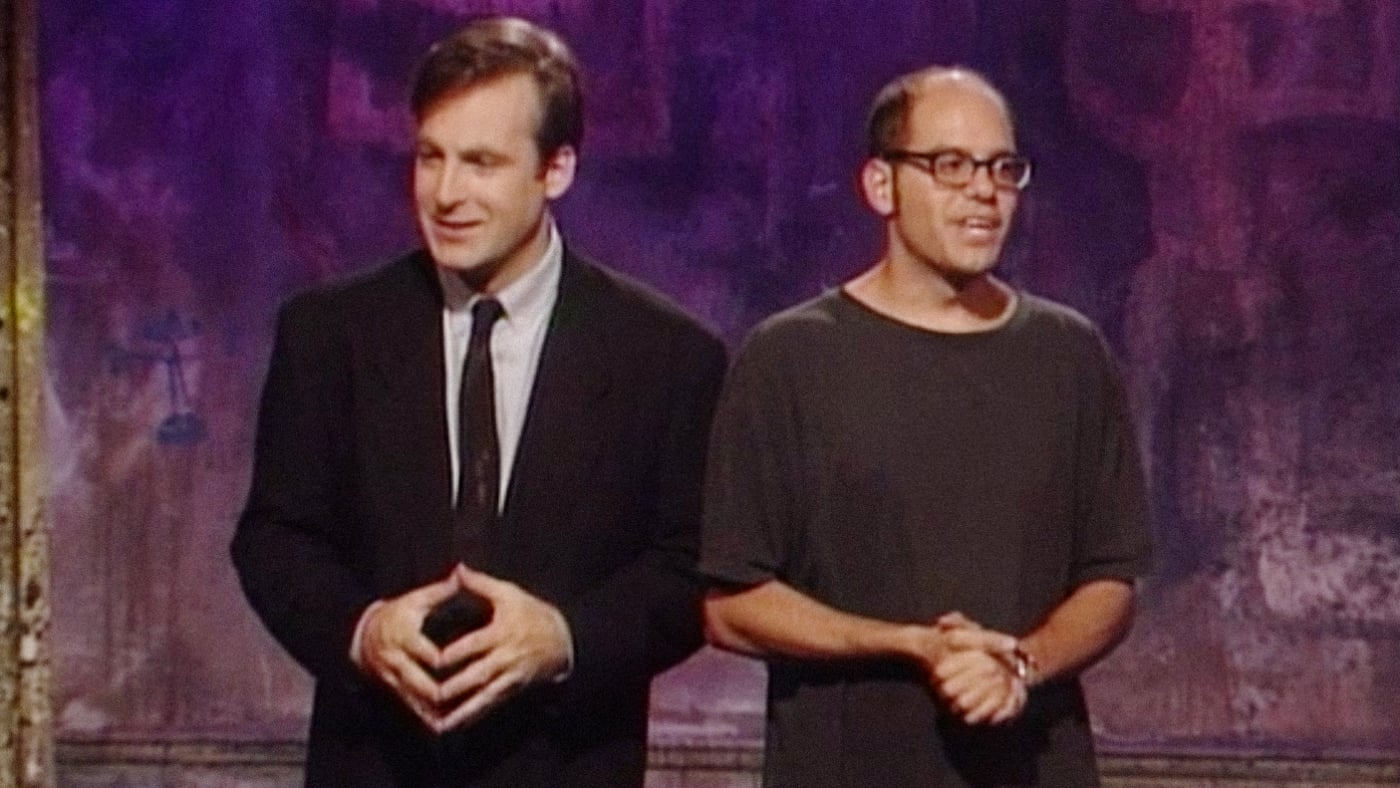Making funny sounds: the music of “Mr. Show,” 20 years later
Kooky commercial jingles. A jangly Oasis-style guitar lick. Intentionally mediocre marching band melodies. It’s all just another day at the office for a music supervisor who specializes in comedy.
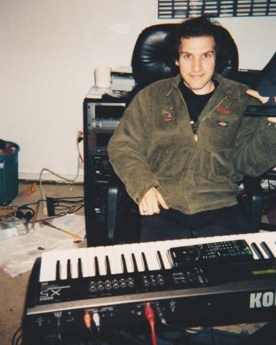
Eban Schletter cut his teeth in that role while working on Mr. Show: Bob Odenkirk and David Cross’ heavily influential sketch series, the one that etched a blueprint for so-called ‘alternative comedy’ and set the stage for Upright Citizens Brigade to mainstream it. The show was not only Schletter’s crash course in the breakneck pace and staggering variety of making music for comedy; it also taught him how music actually enhances the comedy.
Mr. Show, which ran from 1995-1998, served as a launchpad for its creators, along with Patton Oswalt, Sarah Silverman, Paul F. Tompkins and many more. Like them, Schletter went on to an enduring career in comedy, creating music for Drawn Together, SpongeBob Squarepants, and Another Period. When he arrived at Mr. Show, though, he had little experience at making funny things or making funny things funnier with music. He wasn’t a professional musician, either. But he was passionate about film scores and was itching for an adventure.
“I was coming at it from being a civilian musician guy,” Schletter says. “I loved Monty Python but I didn’t really think much of comedy. I certainly didn’t think it was going to be a career.”
In the early-’90s, Schletter was working as a drummer in a band otherwise populated by comics Greg Behrendt and Laura Milligan. He was the odd man out at afterparties in San Francisco’s bustling stand-up scene. Perhaps not for long, though. Finding himself in need of steady work, he agreed to take a job as the house band drummer at a hotel in Alaska. Just before heading north, however, Schletter landed a fortuitous gig making pre-recorded bits for the original pilot tapings of what became Mr. Show. (He’d previously done music cues for some other live shows Cross and Odenkirk were involved in.) When Schletter informed the pair that he’d be heading to Alaska soon, they persuaded him to stick around—just in case HBO picked up their series. The next thing he knew, he was recording a flute-heavy track for Mr. Show from the inside of his shanty garage studio, light leaking in through the slats.
Recording “Red Balloon,” one of the show’s famous transitional bits, was Schletter’s auspicious entrée into the music of comedy. It was a world the casual comedy fan knew little about, but quickly glommed onto and found himself at home within.
“To me, there’s two kinds of comedy music: Comedy music that’s funny on its own and comedy music that is supporting comedy,” Schletter says. “I’m very lucky to have been able to do both, but most of Mr. Show was the latter. At that point, it’s really not your job to actually be funny, and in some cases, it’s funnier if you’re not trying to be funny. You just play it straight and maybe even a little too straight. Like with movie parodies, my mindset was there’s no wink for whatever stupid movie they’re supposed to be doing. You commit to it as it being what it is. Nobody is supposed to listen to it and go ‘Oh, that sounds funny.’”
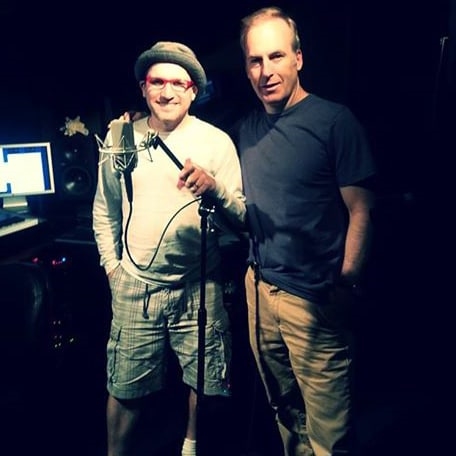
Sometimes sketches required straightforward suspense music, as in the trailer for Coupon: The Movie. Other times, they needed to parody the forced frivolity of local news human interest intros. And often, he was asked to mimic a specific band, whether it was Metallica, the Beatles, or Brian Wilson. For that last assignment, everyone forgot to mention to Schletter what was needed until the day before it was due, at which point he was told, “Oh yeah, just make a Brian Wilson song.”
As he recalls, “There’s a reason he’s fucking Brian Wilson, man. When you back engineer most kinds of music, you’re like, ‘Okay, there are countermelodies in the woodwinds, got it.’ You sort of just figure out your palette. When you back engineer a Brian Wilson song, you go, ‘Okay, now just write a beautiful, soaring Brian Wilson melody that you pretty much have to be Brian Wilson to do.’ So that took all night.”
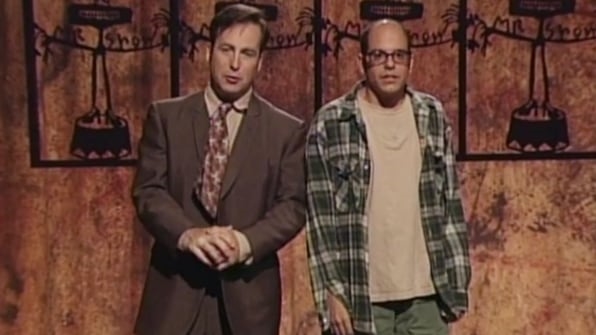
Cross and Odenkirk always had either really specific ideas of what they wanted, or else gave Schletter the leeway to come up with his own concept. Sometimes he was even able to sway the show’s creators around to agreeing with his specific idea. When asked to mimic the actual songs from Jesus Christ Superstar for Mr. Show‘s slacker-era parody segment, “Jeepers Creepers,” Schletter decided to update the sonic template to include traces of Nirvana. The idea of Andrew Lloyd Weber trying to blow listener’s minds with a grunge-infused version of the Christ saga just tickled him. Cross and Odenkirk liked the idea too. It made it into the finished version.
It was only years later, when moving on to other jobs, that the composer realized how spoiled he had been. Not every show, it turned out, had the same faith in its musical collaborators to let them experiment. Mr. Show was special. To commemorate 20 years since the series concluded, Schletter walked Fast Company through one sketch in particular–“The Great Philouza”–and how it reflects every aspect of the creative freedom he enjoyed as musical director.
“The Great Philouza” is a parody of the film Amadeus, in which a mediocre musician is haunted by the naturally gifted Mozart. Instead of classical symphonies, the rivals in the Mr. Show version make marching band music–with Odenkirk’s Philouza doing so solely through enhanced humming and Bobby McFerrin-lite mouth sounds. David Cross plays Philouza’s mediocre nemesis, who is brimming with jealousy.
A Serious-Sounding Score
“The score is very Amadeus-inspired. Like, the stuff with the mediocrity ghost is sort of close to Mozart’s Requiem but not quite. You can actually do Mozart, it’s public domain, but I wanted it to be its own thing. Almost everything that’s in Amadeus has been used in a million other movies, and I just wanted this to stay in its own world.”
Researching the Source Material
“I definitely listened to marching band music, standard John Phillips Souza stuff. I listened to it to hear what the arranging was like. That was another tough thing. The technology is better with samples and now; you’d supplement it maybe with a couple live players, depending on your budget, but that was all little MIDI samples, so it’s a little cheesy sounding.”
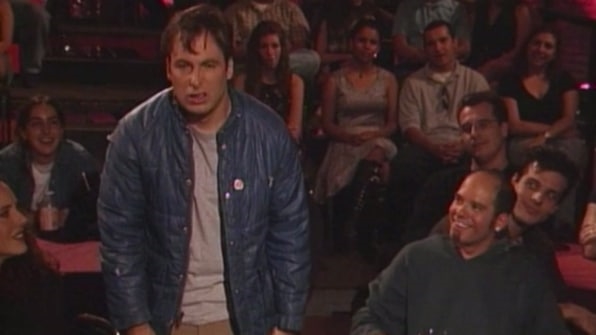
Matching Music to Nonsense
“I had to make music to go along with the ridiculous stuff that Bob [Odenkirk] did off the top of his head. But that stuff was so amusical, it’s crazy. I had to experiment when I first heard it, like what key should it be in, because you could pick four different keys and you’d have to go different places with it. It was so amusical that it could have been almost anything, so especially when it’s supposed to be, like, glorious and everything,when David Cross says how wonderful it is, it needs to have some logic to it–scattered but it had to have some hook that you can grab onto.”
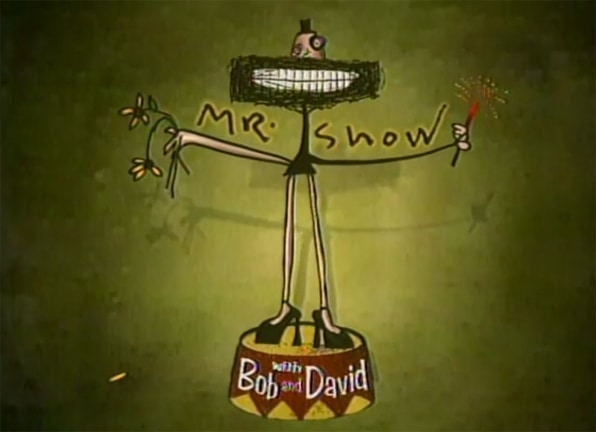
Approximating Mediocrity
“I really had to go for worse than mediocre to get a noticeable transition to Bob’s music and David’s. One of the things I did, because I’m kind of compulsive, is I looked at the shots of them acting like they’re conducting and the band act like they’re playing, and I tried to see if there was any kind of rhythm. I just actually made markers where it looked like they were hitting downbeats, so I could try to make it sound like what they’d be playing, and I found a tempo from that. Then I end up going, ‘Okay he’s just gonna be doing two notes the whole time,’ which, even the most mediocre marching band guy would go, ‘This is just shite.’”
Putting It All Together
“It’s got music that’s funny on its own, because the marching band stuff needs to be just silly and crazy. Then the Amadeus-sounding stuff is conjuring Amadeus, so it’s soundalike but it’s also played straight. Then there’s the one that’s sort of silly in context, the music of the mediocre guy. This sketch has a bunch of music functioning in different ways, all serving the comedy. It’s kind of a nutshell for what that whole show was. They had so many types of comedy on the show. Mr. Show had such a variety of pure silliness, actual social commentary, parody, and other stuff. That’s one of the things that made it work.”
Fast Company , Read Full Story
(27)

